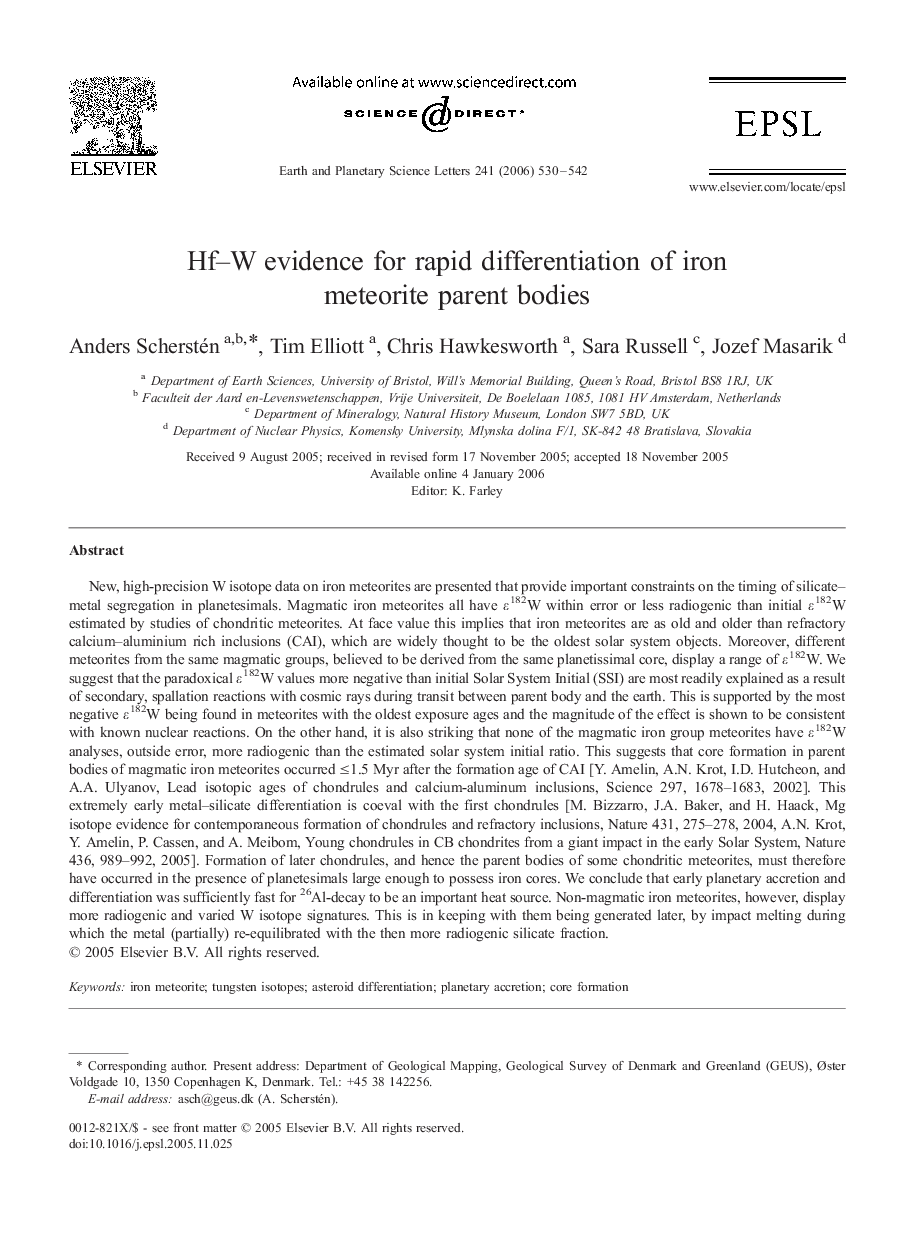| کد مقاله | کد نشریه | سال انتشار | مقاله انگلیسی | نسخه تمام متن |
|---|---|---|---|---|
| 4681198 | 1634952 | 2006 | 13 صفحه PDF | دانلود رایگان |

New, high-precision W isotope data on iron meteorites are presented that provide important constraints on the timing of silicate–metal segregation in planetesimals. Magmatic iron meteorites all have ε182W within error or less radiogenic than initial ε182W estimated by studies of chondritic meteorites. At face value this implies that iron meteorites are as old and older than refractory calcium–aluminium rich inclusions (CAI), which are widely thought to be the oldest solar system objects. Moreover, different meteorites from the same magmatic groups, believed to be derived from the same planetissimal core, display a range of ε182W. We suggest that the paradoxical ε182W values more negative than initial Solar System Initial (SSI) are most readily explained as a result of secondary, spallation reactions with cosmic rays during transit between parent body and the earth. This is supported by the most negative ε182W being found in meteorites with the oldest exposure ages and the magnitude of the effect is shown to be consistent with known nuclear reactions. On the other hand, it is also striking that none of the magmatic iron group meteorites have ε182W analyses, outside error, more radiogenic than the estimated solar system initial ratio. This suggests that core formation in parent bodies of magmatic iron meteorites occurred ≤ 1.5 Myr after the formation age of CAI [Y. Amelin, A.N. Krot, I.D. Hutcheon, and A.A. Ulyanov, Lead isotopic ages of chondrules and calcium-aluminum inclusions, Science 297, 1678–1683, 2002]. This extremely early metal–silicate differentiation is coeval with the first chondrules [M. Bizzarro, J.A. Baker, and H. Haack, Mg isotope evidence for contemporaneous formation of chondrules and refractory inclusions, Nature 431, 275–278, 2004, A.N. Krot, Y. Amelin, P. Cassen, and A. Meibom, Young chondrules in CB chondrites from a giant impact in the early Solar System, Nature 436, 989–992, 2005]. Formation of later chondrules, and hence the parent bodies of some chondritic meteorites, must therefore have occurred in the presence of planetesimals large enough to possess iron cores. We conclude that early planetary accretion and differentiation was sufficiently fast for 26Al-decay to be an important heat source. Non-magmatic iron meteorites, however, display more radiogenic and varied W isotope signatures. This is in keeping with them being generated later, by impact melting during which the metal (partially) re-equilibrated with the then more radiogenic silicate fraction.
Journal: Earth and Planetary Science Letters - Volume 241, Issues 3–4, 31 January 2006, Pages 530–542